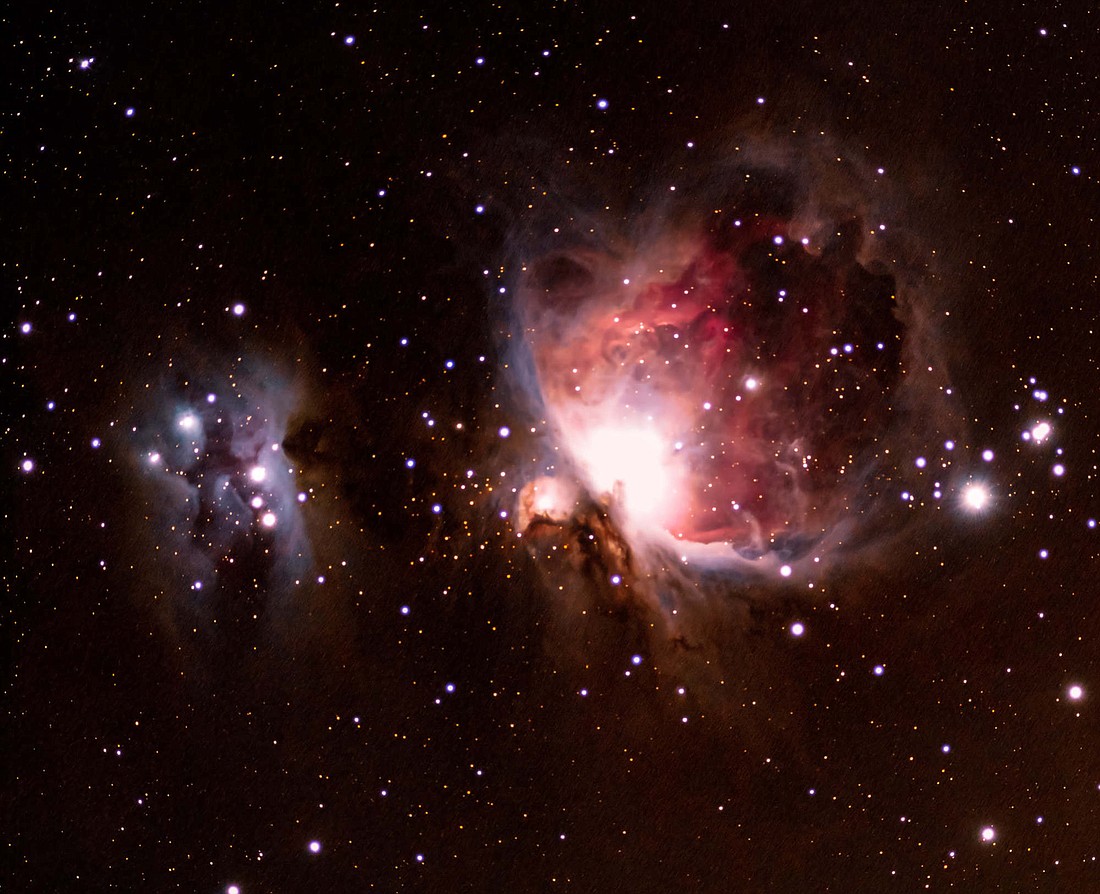- December 17, 2024
-
-
Loading

Loading

Richard Schoepfer’s love of outer space began during his childhood growing up in New York.
“When I was a little kid you just see these pictures, and you’re just like, floored,” the Longboat Key Police sergeant said.
Schoepfer said he got his first telescope at the age of 25 before getting into astrophotography about four years ago.
“It’s a process and it’s expensive,” Schoepfer said. “I think my wife would like me to have a cheaper hobby, but it is what it is.”
Schoepfer said he has two Celestron telescopes: a 9.25-inch and another with an 80-millimeter refractor. He said his larger mount weighs about 75 pounds with all his equipment on it.
Each setup has its own camera and laptop. Schoepfer said he uses PHD2 as his guiding software, a computer program to stack the pictures into one frame and then Adobe Photoshop to color correct the pictures.
“For me, I have way more bad pictures than I get good pictures because of the process,” Schoepfer said.
Earlier this month, the town of Longboat Key shared some pictures of space that Schoepfer took on its Facebook and Twitter pages. The photos include the Andromeda Galaxy, Eagle Nebula, Horsehead Nebula and Orion Nebula.
Schoepfer said he loves the Big Dipper and Orion.
The quality of astrophotography is often dependent on the weather and the season.
“You have humidity, dew, clouds, haziness and that all kind of determines how good your pictures are going to come out because you have really no control over that,” Schoepfer said.
Plus, Florida has the tendency for storms to pop up, especially in the summertime.
“You have to be cognizant of that, so you really don't do a whole lot in the summertime, Schoepfer said. “This is the time of year where you really get out a lot more.”
Schoepfer credits his knowledge of astrophotography to his involvement with the Deep Sky Observers, an organization founded in 1983 for astronomy enthusiasts in the Sarasota and Bradenton areas.
Before the COVID-19 pandemic, Schoepfer said he would share his expertise with the students in the astronomy club at North Port High School. He recommends anyone first learn about astronomy before adding photography to the mix.
“First learn what’s up in the sky and then learn how to use the telescope before you try and jump into this because what’s going to happen is they’re going to get so frustrated trying to do all this stuff that you need to do and they’ll just stop,” Schoepfer said.
Schoepfer said the initial learning process can be like “pulling your hair out.”
“If you like astronomy, this is kind of the next step,” Schoepfer said. “It’s like people always like to take pictures of what they see. In this case, you’re taking pictures of what you don’t see because the camera is way stronger than the person’s eye.
“And, what you can see through the telescope is nothing compared to what you can see once you take pictures and learn how to process the pictures.”